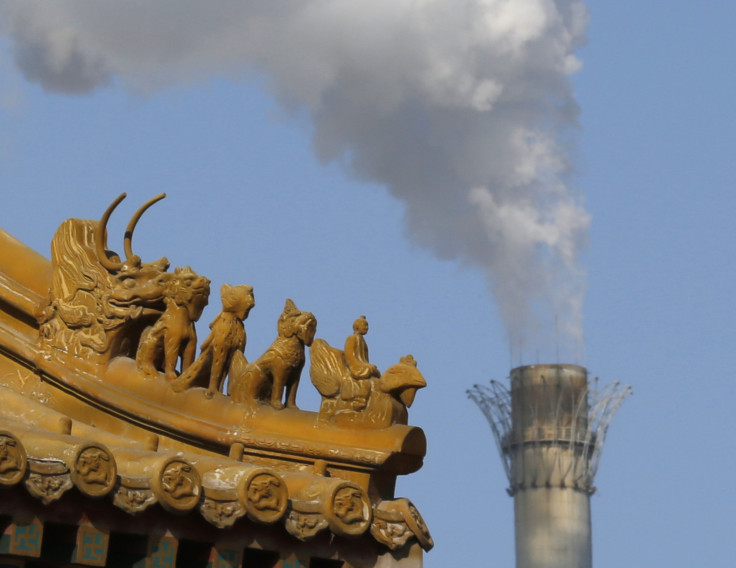China Launches A Carbon Exchange In An Effort To Decrease Pollution
China is launching its first carbon trading scheme in seven cities and provinces, with the pilot project in the city of Shenzhen being rolled out today. China is the largest carbon emitter in the world -- its emissions were estimated to be about 8 billion tons last year, which is about 29 percent of the global total.
China traded its first carbon dioxide permits at 28 yuan ($4.57) to 30 yuan a metric ton today on the Shenzhen Emissions Exchange, Bloomberg reported. The price is 22 percent less than the 4.70 euros a ton ($6.30) the European Union permits were traded for on London’s ICE Futures Europe exchange, the world’s biggest carbon market by traded volume.

The test scheme, starting in Shenzhen, will be expanded to seven areas by 2014 including Beijing, Shanghai, Tianjin and Chongqing. A nationwide platform will go into operations by 2020, and China is aiming to reduce the amount of carbon dioxide emitted per unit of GDP by 40 to 45 percent from 2005 levels by then, according to BBC.
The scheme is broadly modeled after the EU’s system, and will impose a carbon price on 635 industrial and construction companies in Shenzhen, BBC reported. Heavy polluters can then buy and sell according to their needs, but will have to bear the added costs -- the policy hopes to discourage pollutions and give companies incentives to transition to more green energy sources.
The companies covered on Shenzhen’s list were responsible for 31.7 million tons of carbon emissions in 2010, according to Business Green, a green energy news website. They also account for more than a quarter of the local GDP.
On its inauguration day, the Shenzhen exchange traded 21,112 tons of carbon in eight transactions valued at 613,236 yuan, Bloomberg reported.
“The meager volume and pre-approved price level of today’s trades is likely to characterize the initial stages of all of China’s seven ETS pilots,” said Richard Chatterton, a London-based analyst for New Energy Finance.
But there are high hopes for China’s new environmentally friendly initiative. The new markets are set to regulate 800 million to 1 billion tons of emissions by 2015 in the world’s biggest cap-and-trade program after Europe’s, according to Bloomberg New Energy Finance.
There are also concerns that China’s scheme will repeat mistakes made by the EU exchange and find itself faced with an oversupply of carbon allowances that dilutes carbon price, resulting in a negligible impact of green investment, Business Green reported.
Launched in 2008, Europe’s exchange was initially successful, with the price for carbon emission credits rising to $40 a ton, encouraging some companies to switch to cleaner fuels, according to BBC. However, as Europe entered its prolonged economic crisis, industrial activity fell, reducing companies’ needs for carbon emissions credits. Prices have fallen to $6.3 and were as low as $4 a ton in recent weeks.
The Shenzhen exchange has been designed to reduce the risk of oversupply with an “ex-post adjustment” mechanism that allows the government to adjust the allocation of emission based on companies’ actual emissions output, but according to analysis from Thomson Reuters Point Carbon, the market will still initially face an over-allocation of allowances equivalent to about 10 million tons of carbon for the period from 2013 to 2015.
"We see a significant risk of over-allocation," said Hongliang Chai, analyst at Thomson Reuters Point Carbon. "The ex-post adjustment isn't a cure-all, and will probably not solve this issue -- especially since the pilot will cover indirect emissions. Uncertainties on future emissions and allowance prices still loom large in determining the scheme's futures success."
Other concerns for China’s program include a low penalty for non-compliance, and corruptions among local governments, since responsibility for regulation will likely fall to them, BBC reported.
© Copyright IBTimes 2024. All rights reserved.




















